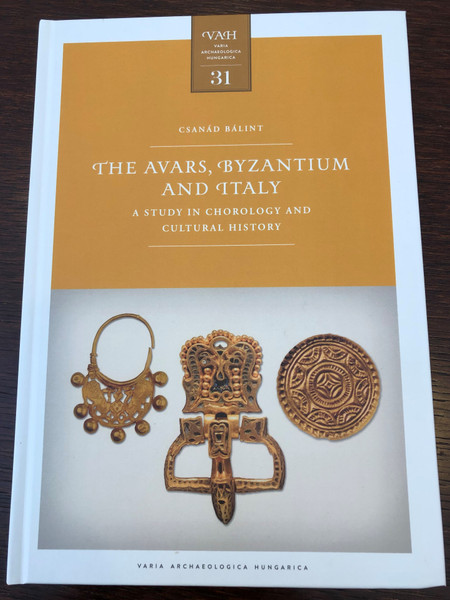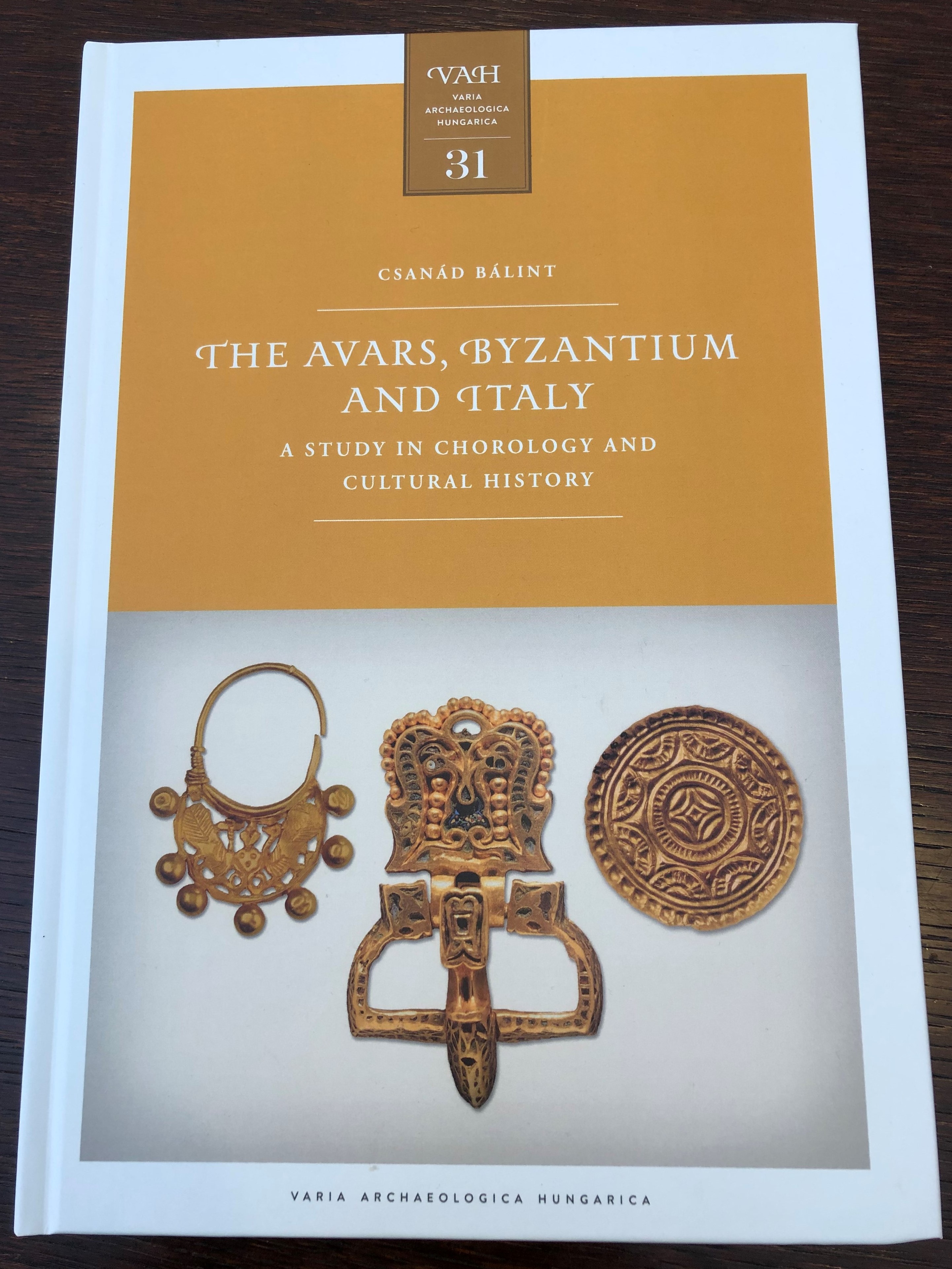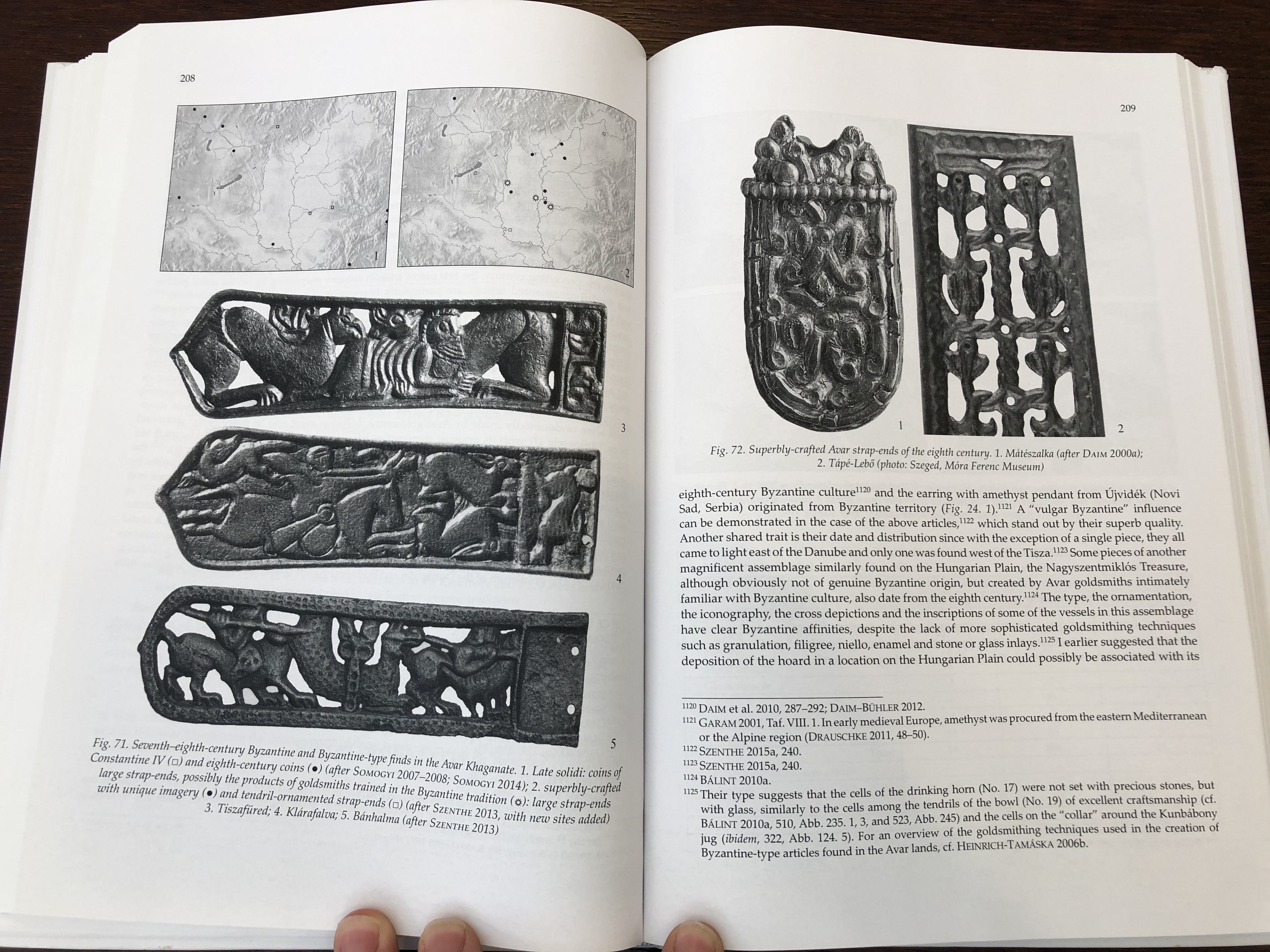Product Overview
The Avars, Byzantium and Italy - A Study in chorology and Cultural History by Csanád Bálint / Varia Archaeologica Hungarica 31 / Institute of Archeology Hungarian Academy of Sciences 2019 / Hardcover
Hardcover 2019
ISBN: 9786155766237 / 978-6155766237
ISBN-10: 6155766231
PAGES: 372
PUBLISHER: Institute of Archeology Hungarian Academy of Sciences
LANGUAGE: English
English Description:
The present volume offers a sweeping overview of the Avar-period archaeological record with a focus on the many diverse cultural impacts stimulating cultural development. In doing so, it addresses mst of the controversial issues in the period's scholarship and thus provides a snapshot of the current state of Avar studies. The main approach is drawn from chronology: a study of the frequencies or lack of certain artifact types, goldsmithing techniques and burial customs shed light on specific regional and cultural traits, and also highlights possible connections spanning broader regions. The detailed coverage of regional distributions provides novel insights about the major cultural influences that moulded the material culture of the Avar Khaganate. One of the study's main findings is that the eastern and central Mediterranean cultural elements in the Avar-period material, generally lumped together under the umbrella term "Byzantine", should be treated differently because only a small portion can be derived from the central provinces of Byzantium, while their majority originates from Italy and the Byzantine provinces. The differences between the Avar-period material culture of Transdanubia and the Hungarian Plain can be explained by the millenium-long divergence in the cultural orientation of these two regions. The issue of "What is Byzantine?" among the Avars is examined from many different angles: through its wide scope and synthetic approach, the book provides a wealth of novel findings and inspiring insights for students of the early medieval history and archaeology of Central, Eastern and South-East Europe, alongside new theoretical considerations regarding the material culture of early medieval Byzantium and its irradiation to the empire's fringe regions.
About the Author:
Bálint Csanád (Kassa, 1943. szeptember 24. –) Széchenyi-díjas magyar régész, a Magyar Tudományos Akadémia rendes tagja. Kutatási területe a kora középkor régészete. Szélesebb ismertséget a nagyszentmiklósi kincs kutatási eredményeinek feldolgozásával kapcsolatban szerzett. 1994 és 2012 között az MTA Régészeti Intézete igazgatója. Bálint Alajos (1902–1983) régész, múzeumigazgató fia.
Fő kutatási területe a kora középkori sztyeppei népek régészete, ezen belül az eurázsiai sztyeppék népei. Emellett a Kárpát-medence kora középkori régészetével is foglalkozik, ezzel kapcsolatban részletesebb kutatási vannak a nagyszentmiklósi kincs témájában.
A sztyeppei népek anyagi kultúrájuk viszonyát vizsgálja a nagy keleti (Mongólia, Kína, India) és az egykorú európai civilizációkhoz. Monográfiákban feldolgozta a kora középkori sztyeppei népek régészetét, valamint a honfoglalás korabeli dél-magyarországi leleteit. Első elemzést adott a késő avar kori telepkerámiának és sikerült feldolgoznia a Transzkaukázus (Kaukázuson túli) kor középkori régészeti és numizmatikai leleteit a 6–7. századi eurázsiai sztyeppék szempontjából. Jelentősebb tudományos eredménye a nagyszentmiklósi kincs (a mai romániai Nagyszentmiklós mellett talált huszonhárom kora középkori aranyedény) leleteinek rendszerezésében és feldolgozásában vállalt szerepe. Itt a kincs származásával, a vele kapcsolatos analógiák és egyéb régészeti kérdéseivel foglalkozik. A 2000-es években az avarok és a szlávok, valamint a honfoglaló magyarok hagyatékának, továbbá a kultúra vitatott kérdéseivel (amelyek akkoriban aktuálisnak voltak tekinthetőek) foglalkozott. Igazgatóként modernizálta az intézet tematikáját és biztosította a kutatások anyagi feltételeit, valamint bevezette az interdiszciplináris kutatási módszerek alkalmazását. A történeti kérdések megválaszolásának genetikai módszere nemzetközi érdeklődést váltott ki.
Több mint százhetven tudományos és tudomány-népszerűsítő publikáció szerzője vagy társszerzője. Műveit magyar, angol, német és francia nyelven publikálja.

























